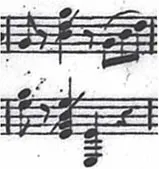![]()
Textual notes
Source:
Hummel, Johann Nepomuk (ca 1816) 'Concert für das Piano-Forte mit Begleitung zweyer Violinen, Viola und Violoncello, (nebst einigen Blasinstrumenten ad libitum) : 73tes Werk / von J: N: Hummel' in the music and musical writings of the Weimar Herzogin Anna Amalia Bibliothek collection (Signature: Mus V: 51 [c]), Weimar.
HAAB Weimar (2010) 'Hummel, Johann Nepomuk: Concert für das Piano-Forte mit Begleitung zweyer Violinen, Viola und Violoncello, (nebst einigen... - [ca. 1816]' [online], av all able:
http://ora-web.swkk.de/digimo_online/digimo.entry?source=digimo.Digitalisat_anzeigen&a_id=2643 [accessed 17th March 2010].
Description:
11 parts, 50 pages. [Bound along with 'Concerto' Opus 34, 39 pages.] Piano part in landscape format, all other parts in portrait format. Separate parts: Piano (Pno), Violin I (Vn.l), Violin II (Vn.ll), Viola (Va), Violoncello e Contrabbasso (Vc e Cb), Flute (Fl), Oboe I (Ob.l), Oboe II (Ob.ll), Fagotto (Fag), Corno I (Cor.l), Corno II (Cor.ll). Plate number: 2500. Identifiers: Weimar : Herzogin Anna Amalia Bibliothek (HAAB - Musikalien und Musikschriften der HAAB) Weimar, 2007: MSU.V.51[c]. Produced: Dresden : Manfred Drescher - Mikrofilm.
First performance: Vienna, C1816. Published: Wien: Steiner u. Comp., [cl816].
Key:
m (measure), b (beat), n (note), Instrument
Piano: (a) = treble stave / (b) = bass stave.
Maestoso
m.11, b.3, Cor.ll: Dotted quaver given in error, corrected here.
m.12, b.1, Ob.l: Original marked fz. (cf. Ob.ll.)
m.14, b.1, Ob.l: Original marked fz. (cf. Ob.ll.)
m.14, bb.1-2, Ob.l: Absent diminuendo hairpin. (cf. Ob.ll.)
m.17, b.2, Vn.ll: Staccato absent. Presumed staccato up to and including m.20.
m.18, b.1, Ob.l: Original marked fz. (cf. Ob.ll.)
m.22, b.1, Ob.ll: Absent diminuendo hairpin. (cf. Ob.l.)
m.30, b.2, Vn.ll: sf appears early in the original, between b.1, n.2 and b.2.
m.31, b.1, Fl: First quaver includes augmentation dot in error.
m.31, b.1, nn.1-2, Cor.ll: Staccato presumed. (cf. Cor.l.)
m.33, b.3, n.2, Vn.ll: cresc. starts later in the original, on b.2, n.4; probably intended to describe the semiquaver group of notes as a whole as in Vn.l.
m.34, b.2, Vn.l: Ligature extends from b.2 to b.3, n.2 but a tie to b.3, n.1 was probably intended. (cf. Vn.ll.)
m.36, b.2, Vn.ll: Slur starts on b.2, n.1 and ends n.3, presumed error. (cf. Vn.l.)
m.37, bb.3-4, Vn.l / Vn.ll: Staccato absent? (cf. Va.)
m.47, b.1, Vc e Cb: f sic.
m.47, b.2, Fl: ff sic.
m.49, Pno (b): Solo duplicated, to mark the entry of the bass voice.
m.57, b.2, v.1, Pno (a): Crotchet given a single augmentation dot, corrected here.
m.59, b.2, Pno (a, b): The G major chord is notable for having the 5ths of the major triad struck through.
This is most likely the presence of an unknown hand and an attempt at simplifying the chord for performance, either making them mechanically easier to play or aesthetically lightening the texture and bringing out the upper partials adding brightness to the chord. (See note to Vn.l m.87.)
m.70, b.1, Pno (b): fz sic.
mm.70-74, b.1, Vn.l / Vn.ll / Va / Vc e Cb: The particular pattern of accents across the strings here (with the two “internal" parts of the chord being produced with a slightly different emphasis) may be no accident since the same orchestration of dynamics is repeated in m.74.
m.83, b.4, Vn.l: Ligature starts on b.4, ends on b.1, n.1 of m.84: cf. Vn.ll. sic.
m.83, b.2, Vn.ll: Ligature starts on b.2, ends on b.4, n.2, m.83: cf. Vn.l. sic.
m.84, b.2, Vn.l: Ligature starts on b.2, ends on b.1, n.1 of m.85: cf. Vn.ll. sic.
m.84, b.2, Vn.ll: Ligature starts on b.2, ends on b.4, n.2, m.84: cf. Vn.l. sic.
m.87, b.1, Vn.l: Chord struck o...

